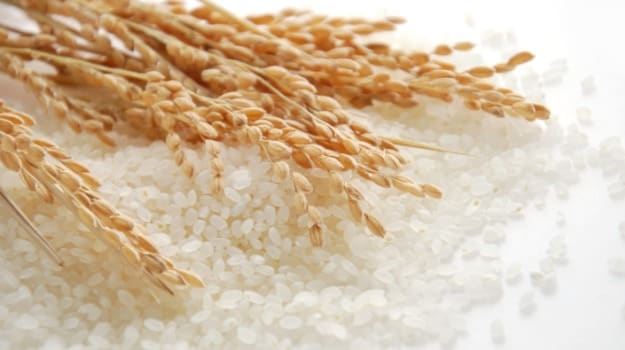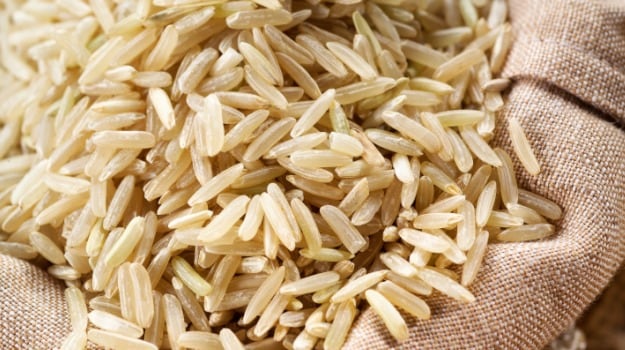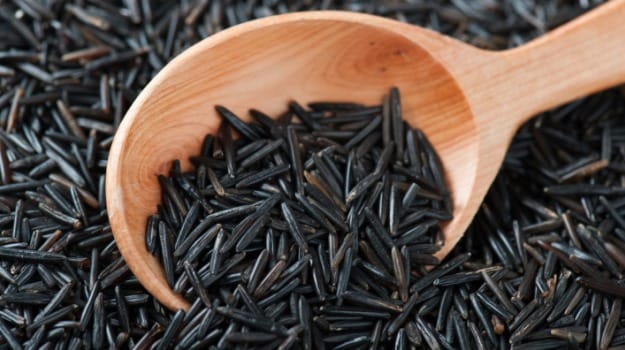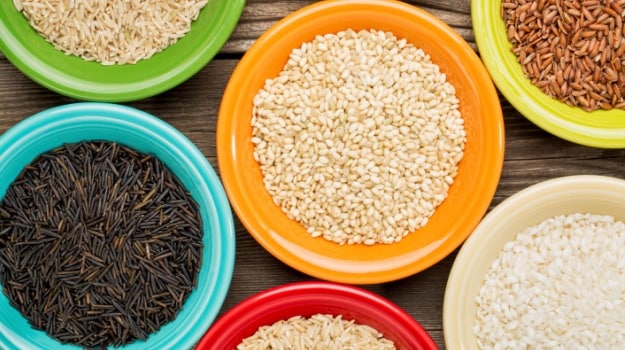Would you not like some rice along with chicken curry? Instead, you settle for tawa rotis or probably try to pacify your taste buds with just a few spoons of the humble staple. Why has eating rice been such a problem for those who are trying to lose weight or are on a strict calorie-restricting diet? Putting it across, in straight and much simpler words - rice is not an enemy of the weight-related goals that you are trying to achieve - inadequate knowledge about this food item is.
White rice
Let's unravel what makes this traditional variety such a huge topic of debate in the health and fitness circle. White rice is the highly refined version of raw rice, which is hulled and milled. What makes this variety a not-so-healthy one despite it being widely consumed throughout the world is the fact that processing and milling take away significant parts of the grain - bran and germ. Bran and germ are rich in dietary fibre as well as nutrients that are beneficial for human health.
According to a Delhi-based weight management expert, Dr. Gargi Sharma, "If white rice undergoes a further process of polishing then its aleurone layer gets removed leading to loss of nutrients. This layer is rich in B vitamins, other nutrients and essential fats."
Also Read: Weight Loss: 7 Healthy Rice Alternatives You May Add To Your Diet

White rice is primarily starch. Due to processing, it falls short on some essential nutrients like thiamine, also known as B1 as well other B Vitamins. Consuming un-enriched white rice can lead to a condition called beriberi, which occurs due to thiamine deficiency. White rice is also treated with additives that can - in certain cases - harm the human body and trigger metabolic disorders like diabetes, obesity and so on.
According to Dr. Ritika Samaddar, Max Healthcare Saket, New Delhi, "The milling and polishing destroy 67% of the vitamin B3, 80% of the vitamin B1, 90% of the vitamin B6, half of the manganese, half of the phosphorus, 60% of the iron, all of the dietary fibre as well the essential fatty acids present in the raw variety." As alarming as these facts may seem, doing away with white rice completely may be a tough choice for most people. This is where healthier alternatives like coloured rice step in.
Also Read: 17 Best Rice Recipes | 17 Top Rice Recipes | Easy Rice Recipes
The healthier alternatives: Brown, red and black
Both brown and red rice have similar nutritional profiles including the harvesting process. These are either un-hulled or partially hulled types of rice, which means you get to chew on the bran and germ that are known to have various beneficial properties. Brown rice is easily available across the globe whereas the red one is specifically typical to the Himalayan Mountains, southern Tibet, Bhutan, as well as southern India.
Also Read: 9 Health Benefits of Switching to Brown Rice

According to Dr. Gargi Sharma, "Brown rice and red rice are quite similar when we talk about them on the nutritional front. Both are great sources of fibre, B vitamins, calcium, zinc and iron, manganese, selenium, magnesium and other nutrients. One thing that sets the red variety apart from its brown counterpart is it being enriched with antioxidants that can help fight damaging free radicals in our body."
Why brown and red rice?
The red variety gets its rich colour from an antioxidant called anthocyanins, which are also found in deep purple or reddish fruits and vegetables. The compound is believed to have properties that can reduce inflammation, and allergy, prevent risks of cancer and help in weight management. The manganese present in both varieties helps in strengthening metabolism, while magnesium helps in migraine, and lowers blood pressure as well as the risks of heart attacks. Along with calcium, magnesium helps in maintaining healthy bones and teeth and prevents risks of arthritis and osteoporosis. Selenium on the other hand protects the body against infections.
Also Read: Rice It Up! 4 Incredible Health Benefits Of Kanji Or Rice Water

Moreover, since they are high in fibre content, the digestion process is slow, which leads to a strengthened digestive system. Fibre also aids in slowing down the rate at which carbs are converted into blood sugar; therefore fibrous foods are low on the glycemic load.
According to experts, the two varieties are also highly recommended for diabetics - because of their low glycemic index - and heart patients. These are considered whole grains, which can help in reducing arterial plaque, prevent risks of cardiovascular diseases, tame high cholesterol and regulate blood sugar. According to recent studies, consuming one cup of brown rice on a daily basis can significantly cut short the risks of developing diabetes by up to 60%.
Also Read: What Kind of Rice is Best for Weight Loss?

We stumbled upon a few studies that talked about a certain component in brown rice that can cause harm to human health - phytic acid. Dr. Gargi Sharma explains, "Phytic acid can hinder iron and calcium absorption. It can happen in cases where you consume brown rice along with food that are rich in calcium or iron. Only those on a high calcium or iron diet would need to be a little careful with the consumption of brown rice."
The forbidden rice
Once known as food served only to the royals in ancient China, the consumption of black rice was forbidden by the masses. The surge in food trends revolving around healthier options like brown rice, quinoa or sunflower seeds has finally given way to unravel this superfood. Shiny black grains of rice when cooked turn purple which not only is a treat to the eyes but also to the taste buds.
This variety beats the nutritional benefits of brown and red rice combined. Rich in fibre, it comes loaded with antioxidants, phytonutrients, phytochemicals, Vitamin E, protein, iron, and other nutrients. It is believed to be beneficial for the liver, kidneys and stomach. It has a high content of anthocyanins, which help in preventing the risks of cancer. Its low sugar and glycemic content makes it an extremely desirable dietary option for heart patients, diabetics as well as those with high blood pressure.
Also Read: 7 Incredible Benefits of the 'Forbidden Rice'- The Black Rice

"A spoonful of black rice bran contains more health-promoting anthocyanins antioxidants than are found in a spoonful of blueberries, but with less sugar, more fibre, vitamins and antioxidants," noted Zhimin Zu, associate professor, Louisiana and State University, America.
With over 40,000 different varieties of rice cultivated and consumed all across the globe, depriving yourself of the simple pleasure of digging into a bowl is unfair. A healthy lifestyle is all about striking a balance between good food and nutrition. Identifying what's nutritious for your health and giving it an interesting, flavourful spin is the remedy.
Also Read: Give Rice A Healthy Twist With These 5 Nutritious Recipes

